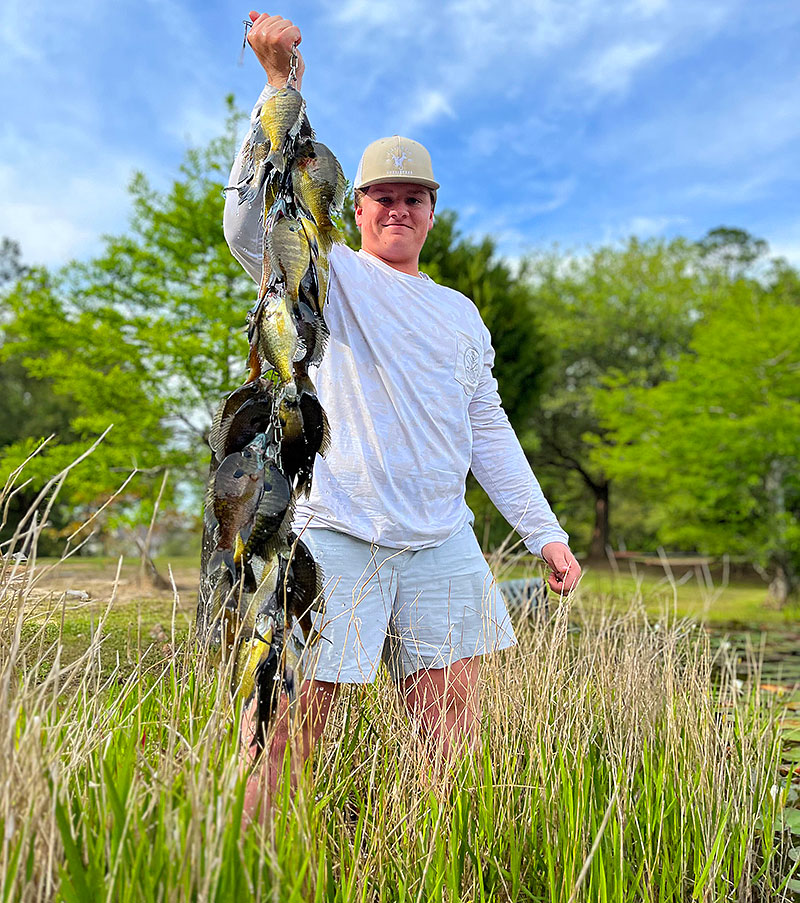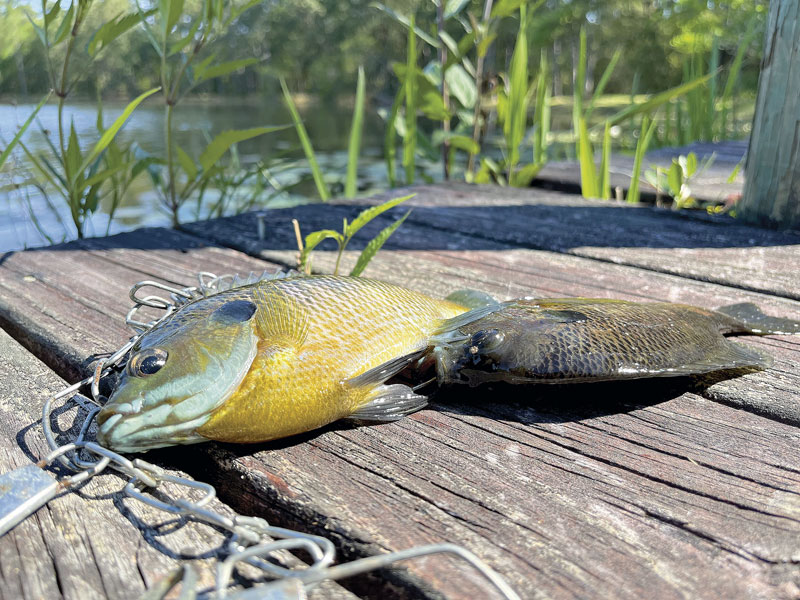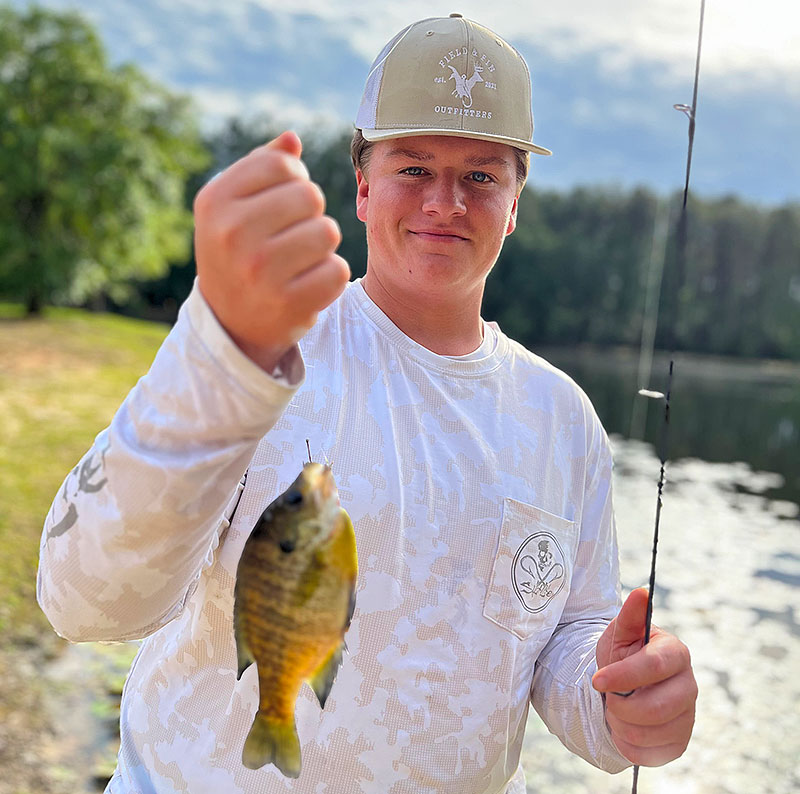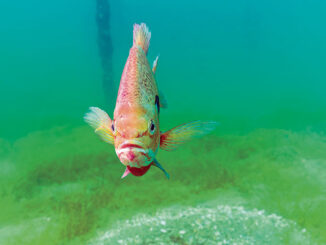 Leave the bobber at home and catch bream on the bottom
Leave the bobber at home and catch bream on the bottom
It’s probably safe to say that the majority of fishermen in Louisiana grew up fishing for bream using worms or crickets. It’s also probably safe to say that those worms or crickets were rigged under a bobber.
Aubrey Posey of Covington has been catching bream since he was 6 years old and has recently discovered a different method that he said is quicker and more efficient — he loses the bobber!
“I used to use corks with worms underneath until that day when I accidentally smashed my bobber against a tree while casting, he said. Posey was 11 years old at the time and riding his bike all the way back to his house to get another cork was out of the question, so he continued to fish.

“I unsnapped my busted cork and decided to make a cast out as far as I could into the pond,” he said. “I started reeling in and felt a few taps. Then I set the hook and reeled up a 6-inch bluegill.”
As Posey continued to fish, he figured out that bream were grouped along a drop-off that went from three feet to about nine feet. The ledge was about 30 feet from the shoreline where he was fishing.
“There’s no way I would have caught those fish using a cork so I’m glad I was forced to fish on the bottom that day,” he said.
Six years later, Posey continues his bobber-less pursuit of bluegill but he’s somewhat perfected his set-up and technique.
Bream busting rig
The 17-year-old senior at Northlake Christian School has a favorite rig for catching bream on the bottom.
He uses a Daiwa ultralight 5’ medium-fast rod with 6-pound test. For line, he uses Crappie Max Camo monofilament. He ties a #6 short shank hook onto the end.
“You can use a long shank hook also, I just find that the shorter hooks are easier to hide inside the worm than the ones with the long shaft,” he said.
About two feet up from the hook, he pegs a very light bullet weight; usually around 1/8-ounce. This allows the line to be pulled along the bottom without hanging up. It’s much the same concept as a Texas-rig for fishing plastic worms for bass. Posey said split-shots will work, but they get hung up easier than the bullet shaped weights.

For bait, Posey recommends using the smaller earthworms that he digs up in his backyard instead of the larger nightcrawlers that are bought at stores.
If you do choose to use the bigger worms, cut them into smaller bream-bite size pieces. When trying to locate fish, Posey walks the shoreline and makes casts away from the bank as far as he can throw, reeling the line back slowly. The key word is slowly.
“You can’t reel it too fast or the perch will rip the worm right off the hook,” he said. When he feels a series of taps, he doesn’t stop. He keeps reeling it in until the fish hooks itself.
After he catches a fish, he stays put and can usually catch between 8-15 in that one spot.
“For some reason, they group up better when they are farther out in the deeper water,” he said. “Maybe it’s just their instinct to stick together in deeper water as protection against bigger bass that may want to have them as a snack.”
Interstate options
For quite some time, Posey has been confined to a few neighborhood ponds, but since he’s now driving, he has been able to scope out a few ponds and lakes that have produced stringers of bream this month.
“I counted over 35 different ponds that are along Interstate 12 from Slidell to Denham Springs,” he said. “I just pull up Google Earth and find ones that I haven’t fished, then figure out how I’m going to get to it.”
These ponds that Posey refers to came about when the stretch of interstate was constructed in the 60s; crews needed soil to build up the land for the roadway to be built on top of. As a result, there are numerous ponds that line the interstate. Posey said there’s usually a service road right off of the interstate where you can access these ponds with ease. Of course, he tries to find ponds that aren’t overgrown, but said sometimes even that doesn’t keep him from fishing it.
“I have a kayak that I can throw in that lets me fish ponds with a lot of brush,” he said.
As in all cases, make sure that if the ponds you are fishing are on private property that you get permission to fish them. If there is any question about it, it’s always better to ask.

Likes the heat
While most fishermen target the shallows during the spawn, Posey waits for the heat of summer to kick in until he starts fishing for bream.
“When the temperatures reach the 90s routinely, I’ll start hitting them deep,” he said. The fish can also be caught in the deep before the spawn when they are staging in March. One concern fishermen have about fishing on the bottom is the amount of snags due to hooking submerged trees or brush.
Posey said he’s never had any problems with snags.
“I think when they dug these ponds they just bulldozed everything clean because I rarely feel anything on the bottom when I’m reeling in,” he said.
As we enter the heat of summer here in Louisiana, the bream bite will be strong and should remain so through August. Posey recommends his method of fishing in deep water, on the bottom, to catch bigger bream. He even extends a challenge to bass fisherman.
“I’m a bass fisherman at heart but will trade in my bait caster for my ultralight any day for this action,” he said.
